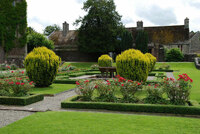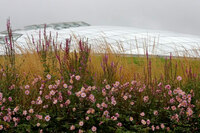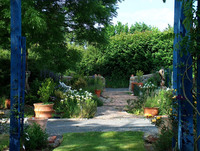- England
- Scotland
- France
- Holland
- Germany
- Italy
- Spain
- Portugal
- USA
- China
- Japan
- India
- Iran
- Advice
- Gardens
- England
- Scotland
- France
- Holland
- Germany
- Italy
- Spain
- Portugal
- USA
- China
- Japan
- India
- Iran
- Advice
- Garden Tours
Aberglasney Gardens have 3 walled gardens made since the Aberglasney Restoration Trust purchased the gardens in 1995. Aberglasney was opened to the public in 1999 and the layout of the gardens is visible on the satellite image if you zoom in on the map below. In 1480 Aberglasney had 'nine green gardens'. No plans survive but they are likely to have been compartments for growing fruit and vegetables, with one or two compartments having lawns and perhaps the kind pattern now called a knot garden, with herbacous flowering plants arranged in geometrical patterns. No details of the nine green gardens survive.
A new house and garden were begun in the mid-seventeenth century with work continuing well into the eighteenth century and under different owners. The new layout included a 'cloister' garden of unknown use. Like other gardens of the period, it is may have been inspired by someone's visit to Italy or North Europe - or it may have beenn inspired by pre-Renaissance 'wall walks' on castles. The Yew Tunnel probably dates from the eighteenth century and may not have been conceived as a tunnel when planted. Further changes took place in the nineteenth century.
The estate was largely neglected in the twentieth century so that when 'rediscovered' in the 1990s the garden posed considerable problems for the Aberglasney Restoration Trust and their landscape architectural advisers - Colvin and Moggridge. The re-creation was led by inspired by the picturesque descriptions of 17th-century Aberglasney poet John Dyer proposed led to the making of:
Other recent features include
Llangathen, Carmarthenshire, Wales, SA32 8QH
All year - but check website
Yes


